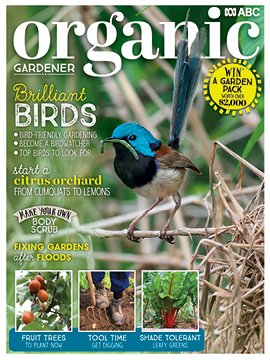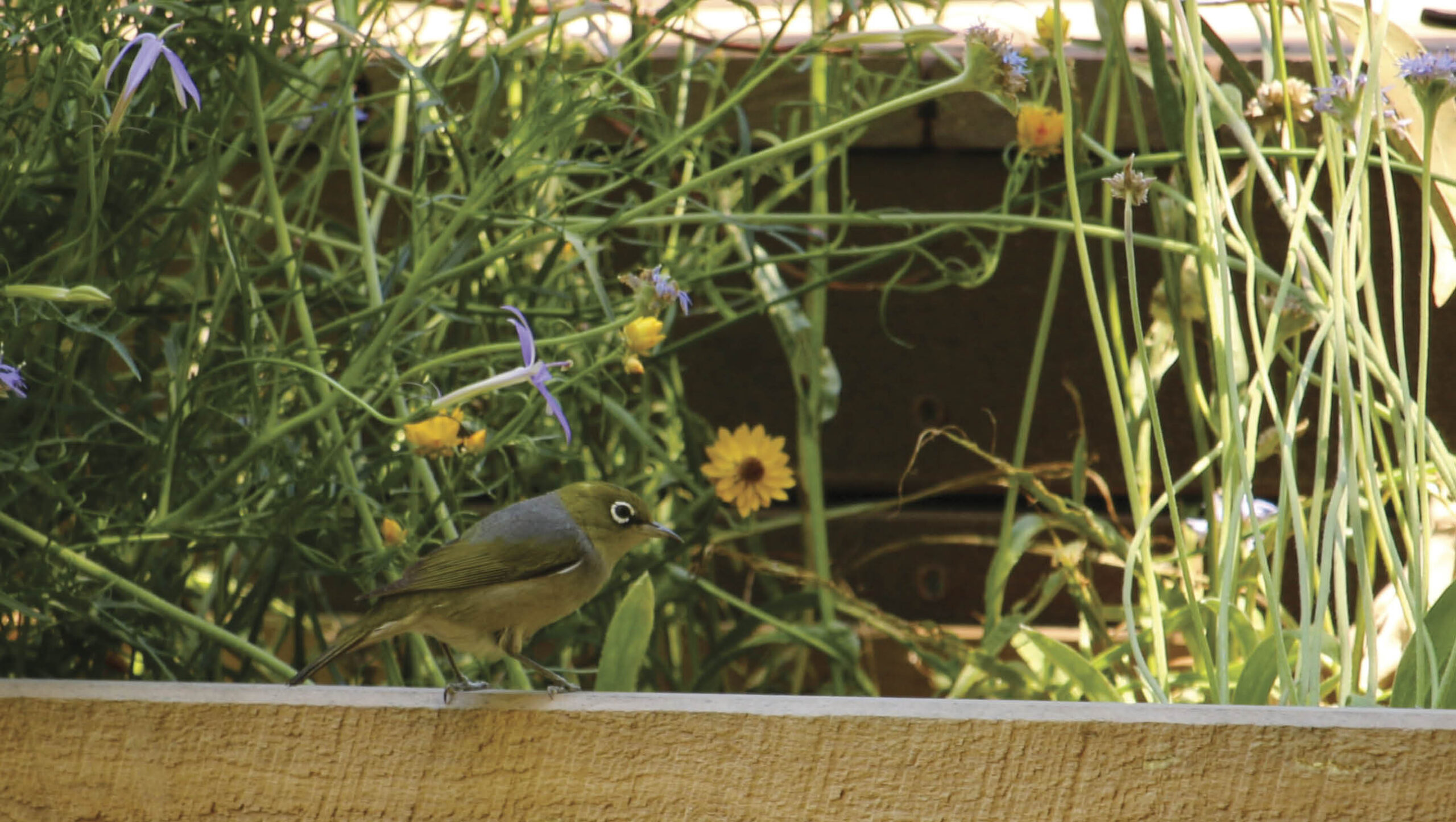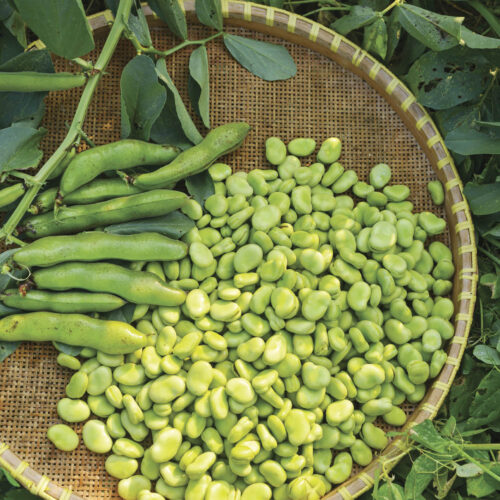Bring in the birds
2022-05-04T01:17:30+10:00
Libby Woodward tells how she and her husband redeveloped a section of their garden with native understory plants designed to draw in insects, birds and wildlife.
Our mission was to improve the garden for all indigenous creatures but also to encourage small birds, lizard, frogs and native predator insects to help with the pest control in our productive areas. We decided to provide more native understory while keeping the best of what was already in the garden. This work was done gradually, after we got to know the existing plants.
We started by getting rid of the pest plants. Out came the pencil pines that provided homes for pest birds such as sparrows. Also, the weedy blue periwinkle, most of the agapanthus (the rest will go later) and the highly invasive ixias.
But we did this in stages and only removed plants when we were ready to replant. Empty, disturbed ground just encourages weeds. Other plants struggled with the root competition from the trees, so it was clear that if our planting was to be successful, we would need to create raised garden beds and buy planter boxes (our boxes are all wicking beds). The soil in the whole garden had become hydrophobic and compacted with very little humus. Water just ran off without penetrating.
Creating the new garden
In autumn last year, to create the raised beds, we aerated the soil by penetrating it with a fork, wet it thoroughly and then sprinkled over blood and bone and gypsum. Next, came a layer of wet newspaper or cardboard, then two more layers of blood and bone, lucerne hay, clay soil (from groundwork from an above-ground pool) and gypsum. Finally, we added old sheep manure and new topsoil. The top level was gently forked to integrate the soil layers a little. Lastly, we added more blood and bone and a good layer of native wood chip mulch and watered well.
We chose a large range of native plants for the new beds. They came from excellent local indigenous nurseries. These nurseries are found all over Australia. Search on the internet for an indigenous nursery in your area and you might be surprised by what you find. If you’re prepared to wait, many will also grow to order.
Local councils also have indigenous nurseries and botanic gardens and the Australian Plant Society have groups all over Australia. All have regular plant sales.
The best time to plant is autumn. Purchase plants as plugs or tubes, costing around $1.50 to $2 each. These smaller plants normally establish and grow better than large plants. Sourcing plants suitable for the local climate means they are less likely to fail.
We also used native slow-release fertiliser as we planted, but it’s not always easy to establish a new garden. The top soil we bought had good colour and consistency but didn’t contain worms or humus and probably not much fungi or bacteria either. Some of our small plants struggled and didn’t perform as well as the same plants in premium potting mix in the planter boxes. But they’re now improving and birds are scratching in the mulch looking for worms and insects.
Read more about how Libby and her husband created a wildlife haven in their garden, including their favourite bird-attracting plants in our Early Winter 2022 issue (OG 133). There’s a selection of back issues available here — you can also subscribe and get the most recent issues delivered to your door!







